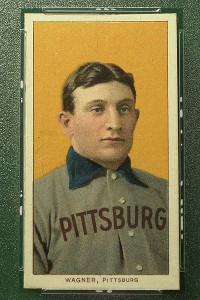Laura Packard (pictured) is vice president, sales and marketing, for American Collectors Insurance.
Spring brings thoughts of baseball cards to the minds of fans, collectors, dealers, and insurance agents in the collectibles insurance marketplace. That's true even more so this year, after a rare Honus Wagner 1909 baseball card sold for an auction record $2.1 million in April.
 In the early 1900s Wagner was the best-known name among all ballplayers, leading his team to the World Series title in 1909. He later became one of the first five players inducted into the Baseball Hall of Fame. Many consider him the greatest shortstop to ever play baseball. His 1909 T206 card also has its own plaque in the hall.
In the early 1900s Wagner was the best-known name among all ballplayers, leading his team to the World Series title in 1909. He later became one of the first five players inducted into the Baseball Hall of Fame. Many consider him the greatest shortstop to ever play baseball. His 1909 T206 card also has its own plaque in the hall.
Recommended For You
Want to continue reading?
Become a Free PropertyCasualty360 Digital Reader
Your access to unlimited PropertyCasualty360 content isn’t changing.
Once you are an ALM digital member, you’ll receive:
- Breaking insurance news and analysis, on-site and via our newsletters and custom alerts
- Weekly Insurance Speak podcast featuring exclusive interviews with industry leaders
- Educational webcasts, white papers, and ebooks from industry thought leaders
- Critical converage of the employee benefits and financial advisory markets on our other ALM sites, BenefitsPRO and ThinkAdvisor
Already have an account? Sign In Now
© Touchpoint Markets, All Rights Reserved. Request academic re-use from www.copyright.com. All other uses, submit a request to [email protected]. For more inforrmation visit Asset & Logo Licensing.







